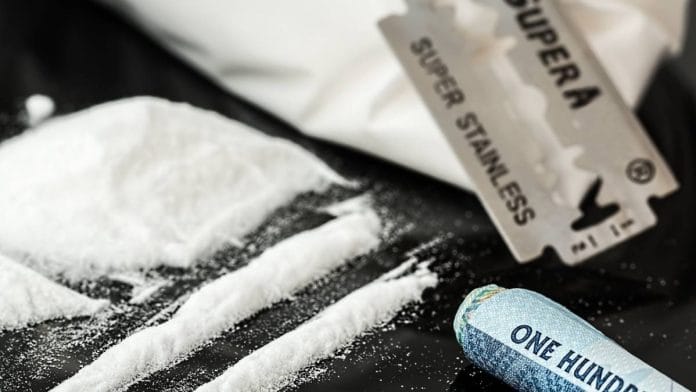Thank you dear subscribers, we are overwhelmed with your response.
Your Turn is a unique section from ThePrint featuring points of view from its subscribers. If you are a subscriber, have a point of view, please send it to us. If not, do subscribe here: https://theprint.in/
In 2024, Kerala recorded 27,701 drug-related cases under the NDPS Act — more than three times that of Punjab, once considered India’s narcotics epicenter. Every district in Kerala reported at least 500 cases, a grim national record. Even more unsettling, 40% of substance abuse victims are minors. Children as young as 10 have already entered the drug cycle, as users or couriers.
These numbers are not just chilling; they are systemic. In early 2025, nearly half of all murders in Kerala were drug-related. 588 children under 18 sought treatments at de-addiction centers in just January and February. Behind every statistic lies a quiet emergency of families breaking, classrooms disrupted, and young lives derailed.
Kerala’s drug challenge is not limited to urban hotspots or border corridors. Drug networks have adapted to local geography — using tourist zones, courier services and even school campuses. Social media and the dark web create easy access to these substances, mostly hybrid or low-quality synthetic drugs.
But the problem goes beyond trafficking or enforcement gaps. Sociological factors have created fertile ground for this drug menace to take such a strong root. Disconnect between parents and children leave adolescents emotionally adrift; academic and job pressures push youth toward escapism; and social media creates a distorted sense of reality. Most were introduced to drugs by friends, showing how deeply peer influence drives this crisis.
To its credit, the Kerala government has acted. Since 2023:
– 1,300 drug hotspots were mapped.
– 18,000+ raids were conducted around schools and colleges.
– A statewide “Kerala Model” campaign launched, coordinating multiple departments.
– Student wellness centers were introduced in pilot districts.
– Every district now has at least one de-addiction facility.
– The PITNDPS Act is being used to detain habitual traffickers and seize assets.
These efforts have led to more arrests and awareness. But demand remains strong, and relapse rates are rising. The crisis now exceeds the scope of law enforcement. It is a public health emergency and a cultural reckoning.
In studying how other countries faced similar crises, one lesson is clear: lasting change comes not from suppression but saturation — of time, energy, and purpose.
Two decades ago, Iceland had one of Europe’s highest teen substance abuse rates. By flooding after-school hours with engaging activities and building strong parent-school networks, Iceland reduced teen drunkenness from 42% to 5%.
In Colombia, public media campaigns paired with school-based resilience programs delayed the average age of first drug use. Sweden combined firm drug laws with early counseling and youth mentorship. These models focused on prevention and inclusion — not just punishment.
Based on this research and Kerala’s context, I recommend the KERALAM Initiative (Kerala Empowered Response Against Local Addiction Management) — a multi-sector, community-based plan to reduce demand and empower youth. This is not a government proposal, but an independent framework developed through months of study and dialogue with educators, counselors, law enforcement, and students.
Key components include:
– Use Kerala’s cultural and natural assets — music, dance, trekking, literary clubs, beach sports, skate sports and coding clubs — to offer positive alternatives to drugs. These aren’t hobbies; they are social shields.
– Equip parents through PTA and Kudumbashree sessions. Create peer mentor groups in schools. Involve workplaces in youth outreach.
– A dedicated, non-governmental body for coordination between various independent sectors such as Government, Police, educational institutions and community associations. The NGO will align activities, monitor results, and publish annual impact reports — ensuring uniform, effective action and continuity beyond political cycles.
– Break supply chains using tech and interstate coordination. But treat first-time youth users as victims, diverting them to counseling and rehab, not jail.
– Cut youth drug initiation by 50% in five years, delay the average age of first use, and reduce school-based drug incidents by half — tracked through a shared public dashboard.
Kerala cannot solve this through policing alone. A drug-affected generation threatens the very foundations of its progress — from educational achievement to social and financial stability. Yet, Kerala also has unique strengths: a literate population, global diaspora, active local bodies, and deep community networks.
We must act now. The next two or three years will determine whether Kerala becomes a cautionary tale — or once again, a model for resilience and reform.
These pieces are being published as they have been received – they have not been edited/fact-checked by ThePrint.


